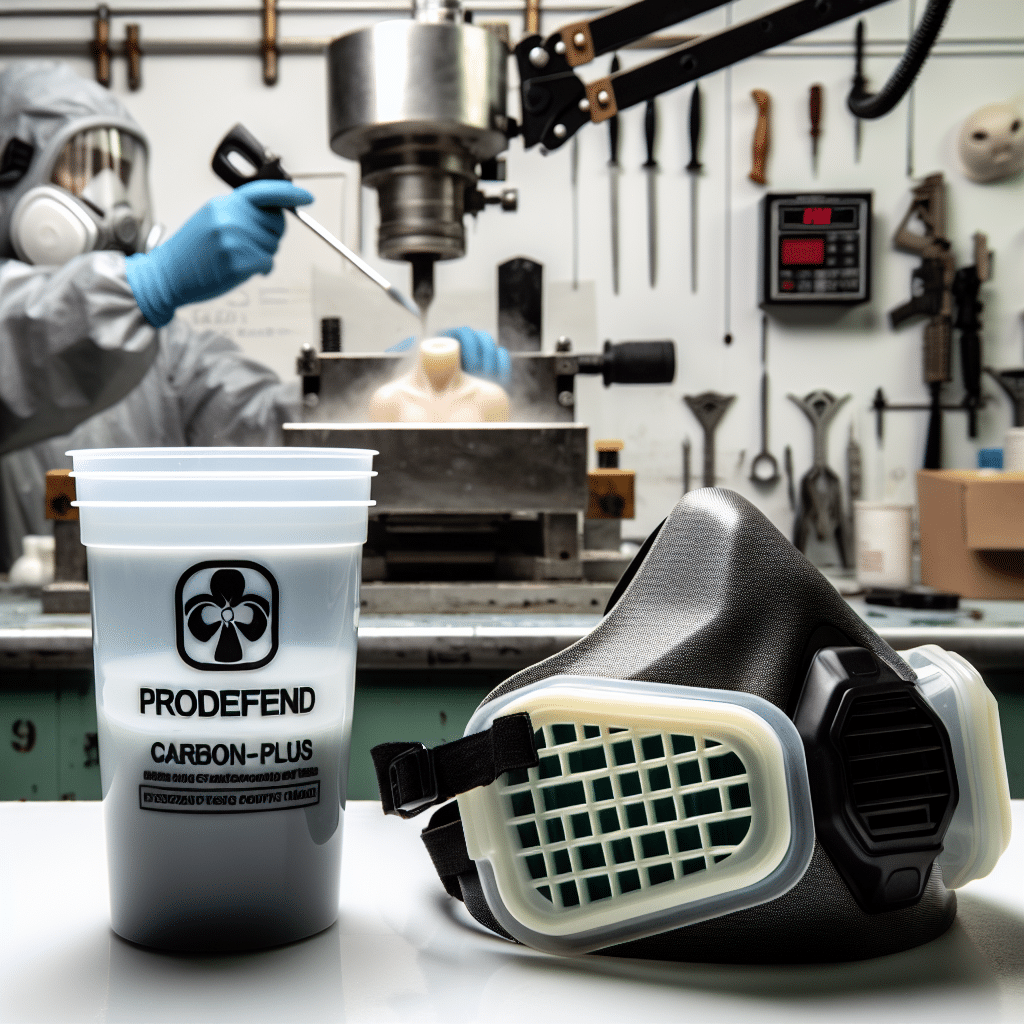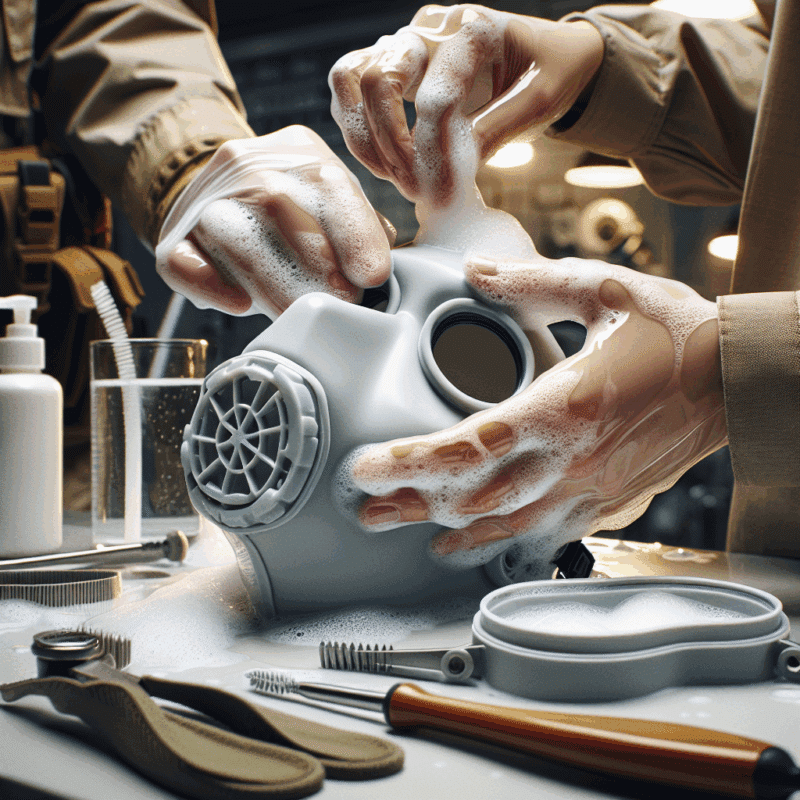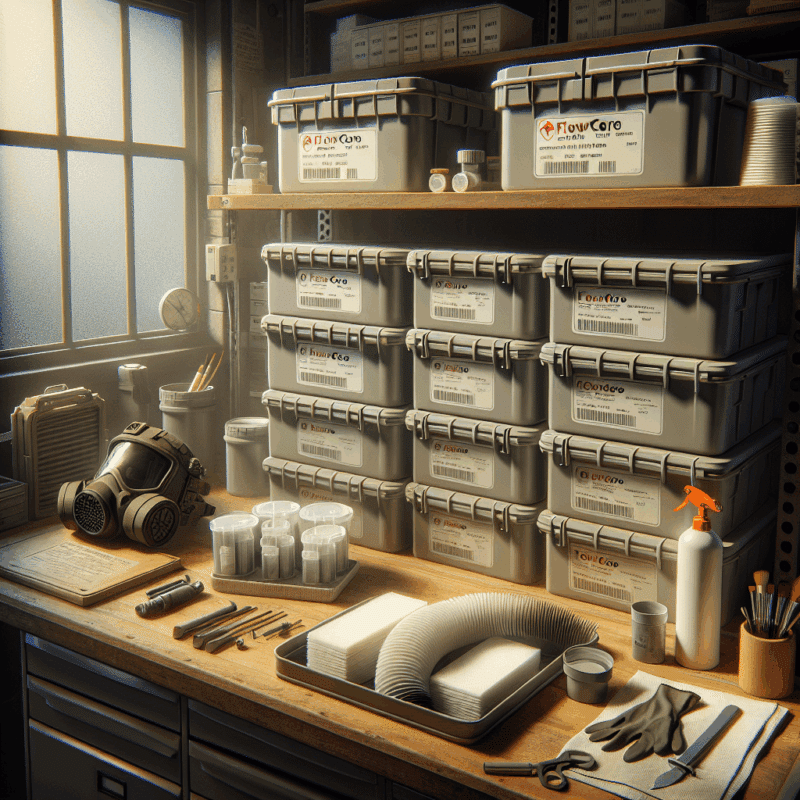How to Check ProDefend Odour Breakthrough on Resin Jobs
In This Article
- ProDefend odour testing helps identify filter saturation before health symptoms occur.
- Always replace filters at the first sign of smell penetration inside the respirator.
- Environmental factors can impact filter longevity—test more frequently in adverse conditions.
- Written logs and installation dates help manage filter replacement schedules effectively.
- Fit testing and proper storage practices significantly prolong mask utility.
- ProDefend filters meet UK and EU standards, supporting regulatory compliance.
- Community tips enhance practical implementation of ProDefend odour testing methods.
Why Odour Breakthrough Matters in Resin Work
Understanding chemical fume exposure risks
Working with resins—whether polyurethane, polyester, or epoxy—presents significant occupational hazards due to the emission of volatile organic compounds (VOCs) and isocyanates. These airborne substances can trigger respiratory irritation, headaches, or longer-term health complications when inhaled regularly. Prolonged exposure without effective filtration can even lead to occupational asthma and sensitisation, conditions that may persist for life.
ProDefend odour testing becomes a critical safety protocol in this scenario. When resin begins to off-gas, even in well-ventilated spaces, chemical odours make it increasingly easy to detect if a filter is underperforming. Once you begin noticing smells inside your respirator, it could be the first sign of filter breakthrough, thus indicating it’s no longer offering the required protection. Recognising and responding to this early symptom can make a substantial difference in preventing long-term health issues among users.

What Is ProDefend Odour Testing?
Identifying filter effectiveness against resin fumes
ProDefend odour testing refers to a proactive method for determining whether the activated carbon filters in a ProDefend respirator are still effective at absorbing hazardous fumes. Unlike quantitative fit testing—which requires specialised devices—odour testing is qualitative and user-performed. It focuses on the subjective detection of chemical smells, which are key indicators of filter efficiency degradation. This testing is particularly suited for workplaces where resins emit noticeable odours upon breakdown, such as in composite manufacturing, floor coating, and 3D printing environments.
Resin jobs demand high-performance filtration due to the inhalation risks posed by VOCs. ProDefend filters are engineered with activated carbon, a material that captures organic vapours effectively. Over time, however, these carbon molecules become saturated. ProDefend odour testing helps establish when this saturation has occurred. Ideally, these smell tests are conducted before each use and during lengthy projects. Even a faint waft of resin odour while wearing a properly fitted mask is reason enough to replace filters immediately. Ensuring this vigilance forms the cornerstone of a robust workplace safety plan.
Signs of Filter Breakthrough During Resin Applications
How smell can reveal filter failure
The clearest sign that a ProDefend filter is compromised is when the user begins to detect the smell of resin during application. Under ideal conditions, a properly fitted ProDefend mask with functioning filters should completely block resin odours. The return of unmistakable chemical smells suggests that the filter’s capacity to absorb organic vapours has diminished.
However, there are other complementary signs of filter failure to observe. Symptoms such as headaches, dizziness, or a sudden onset of nasal irritation during work should serve as biological warning systems. They reinforce qualitative observations obtained through ProDefend odour testing. When resin smell bypasses the mask’s safeguards, it confirms that the vapour phase has penetrated the activated carbon layer—a phenomenon known as filter breakthrough.
It’s also prudent to consider environmental variables. Humidity and temperature can accelerate filter saturation, leading to earlier failures than suggested by manufacturer guidelines. Thus, users working in hot or poorly ventilated spaces may need to conduct odour testing more frequently. Doing so can greatly reduce the risk of inhaling dangerous substances during an active resin job.
Step-by-Step: How to Perform an Odour Check on ProDefend Filters
Testing filter integrity before and during use
Conducting a ProDefend odour testing procedure is straightforward, though best practices should be followed to ensure accuracy. Begin by entering a controlled environment free of strong ambient odours. Put on your ProDefend mask and ensure it is securely fitted—perform a seal check by covering the filters and inhaling slightly to see if the mask collapses inward. This confirms airtight contact with the face.
With the mask in place and fit confirmed, open a small container of the resin or solvent normally used in your tasks. Hold it at a safe distance and allow the vapours to disperse naturally. Most professionals recommend holding the source 15–30cm from the mask and taking a slow breath. If no smell is detected, your filters remain functional. However, if you can detect even the slightest resin odour, that’s a reliable indicator that the ProDefend filter has failed, and immediate replacement is required.
Make it a daily routine to conduct odour testing before starting work. For longer projects, reassess every hour or two as filtration capacity may degrade with prolonged exposure. Always label used filters with their installation date to track longevity over time. Establishing this habit minimises health risks and ensures legal compliance for workplace safety audits.
When and How to Replace Your ProDefend Filters
Manufacturer guidelines and real-world use cases
According to the manufacturer, ProDefend filters generally maintain their effectiveness for 40 hours of use or up to 30 calendar days, whichever comes first. These figures, however, serve merely as guidance under average conditions. In real-world scenarios—especially with high-intensity resin use—filters can saturate more rapidly. Conducting ProDefend odour testing regularly ensures subjective assessments supplement these timelines effectively.
When replacing the filters, always refer to your respirator’s instruction manual. Typically, changing filters involves unlocking the filter bayonet mechanism and securely attaching a fresh cartridge. Whether you’re a hobbyist or on a full-time job site, ensure that replacements are kept in sealed packaging until required. This prevents premature carbon saturation due to passive exposure to the environment.
Additionally, store spare filters in an airtight container away from sunlight and chemical substances. This extends their shelf life and guarantees performance upon installation. Establishing filter replacement schedules found in manufacturer instructions, then refining them based on your odour testing results, offers the best blend of precaution and pragmatism.
“Once I started using ProDefend odour testing before each resin pour, I noticed fewer migraines and eye irritation during long bench sessions.”
Comparing ProDefend Filters to Competitors
What makes ProDefend effective for resin safety
When evaluating respiratory protection, ProDefend filters stand out for their balanced combination of comfort, chemical filtration, and lifecycle tracking. Compared to competing brands, ProDefend uses a high concentration of activated carbon suitable for the specific molecular composition of VOCs released from resin-based products. This focus makes the filters particularly effective for indoor crafting, stone setting, and fibreglass work alike.
Competitors may offer similar structural designs, but many do not enable odour detection as intuitively because of less sensitive filtration compositions. With ProDefend odour testing, users experience a clear contrast when saturation begins. This subjective clarity has become a major reason why professionals make the switch. According to independent review platforms and user feedback forums, ProDefend’s respirator systems consistently receive high marks in filter longevity and reliability. For more details, see Understanding resin odour causes in depth.
Further differentiation lies within ProDefend’s dual-cartridge modular configuration, which allows easy upgrades or replacements without compromising facial seal integrity. Combined with extensive community validation, ProDefend offers a compelling case for anyone working regularly with hazardous resins. You’ll find more technical comparisons at Essential UK & EU safety regulation updates.
User Tips: DIY and Trade Feedback on Resin Job Protection
Community advice on breakthrough detection
Anecdotes from resin artists, contractors, and chemical technicians consistently highlight the practicality of ProDefend odour testing. DIY users frequently comment that it becomes second nature to perform the check before opening a new resin container. This cultural habit within the resin-working community has contributed to fewer complaints of headaches and sinus problems after extended exposure.
Professionals often suggest writing the date of first use directly on filter cartridges with a marker pen. This visual queue makes filter management simple even on busy job sites. Additionally, tradespeople speak highly of setting phone alerts at 30-hour intervals during high-usage phases—encouraging timely ProDefend filter tests and replacements. More practical application tips are explored in Learn more about Respirator Maintenance and Safe Resin Use.
Another key recommendation from regular users is to integrate ProDefend odour testing into the broader personal protective equipment (PPE) workflow. For example, they urge users to pair mask testing with routine glove checks and eyewear cleaning. This systematic approach creates a stronger culture of safety and prevents mistakes easily made during hectic project work.
Maintaining Your Dust Mask for Long-Term Performance
Fit testing and filter storage
For optimal performance, your dust mask must maintain a reliable face seal over time. Periodic fit testing is crucial, particularly if the user has facial hair, recent weight changes, or uses the mask in varying temperature conditions. Simple qualitative fit tests—including smelling aromatic compounds or observing smoke flow—are highly effective and align well with ProDefend odour testing principles.
Storage is another essential component. Always store the respirator in a dry, dust-free cabinet or sealed bag. Avoid leaving it in direct sunlight or vehicles, as plastic membranes can warp and compromise the fitting mechanism. Filters, unless already in use, should remain in their factory-sealed containers. For opened filters yet to be fully saturated, re-store in dedicated airtight bags to prolong usability.
Proper handling and conditioning of both mask and filters ensure airflow resistance remains minimal and chemical absorption capacity remains high. Follow manufacturer guidance meticulously, which can be found through your supplier or through Read a related article.
Compliance: UK & EU Respiratory Safety Regulations
How ProDefend aligns with international safety standards
ProDefend products comply with rigorous standards established by the HSE (Health and Safety Executive) in the UK and the EU PPE Regulation (EU) 2016/425. Their activated carbon filters are CE certified, ensuring effective VOC protection during resin applications. Furthermore, the ProDefend odour testing approach supports COSHH (Control of Substances Hazardous to Health) best practices, marking it as exceptional in terms of compliance assistance for employers and sole traders alike.
Resin users working within regulated environments must document their PPE inspections, and ProDefend makes this approachable. Their odour testing mechanism integrates easily with standard health and safety logs and risk assessments. With rising enforcement by local authorities and increased scrutiny of indoor air quality compliance, investing time in ProDefend odour testing goes beyond health—it becomes a legal safeguard.
For additional information about respiratory protection standards and ProDefend’s compliance data sets, consult Understanding resin odour causes in depth. Industry documentation suggests that frequent filter checks form one of the strongest predictors of low incident rates in resin workplaces.
Recap: Protect Your Health When Working With Resin
Resin work carries inevitable exposure to toxic fumes, making respiratory protection critical. ProDefend odour testing provides a simple yet powerful means to verify the effectiveness of your mask’s filters. Detecting smells early helps prevent filter breakthrough, protects the lungs, and enhances overall jobsite safety. Every resin user—from hobbyists to full-time tradespeople—can benefit from this sensory-driven testing process. Integrating it into your daily workflow reduces the chance of chemical exposure and strengthens your commitment to best safety practices.
Great guide on how-to-check-prodefend-odour-breakthrough-resin-jobs – Community Feedback
How do I know if my ProDefend mask is breakthrough odour on resin jobs?
If you detect resin or chemical odours while wearing your mask, this signals filter breakthrough. Change your ProDefend pads and check mask fit; working odour-free ensures proper protection.
When should I replace my ProDefend filters during resin work?
Replace ProDefend filters immediately when you notice any detectable odour or after the recommended usage period indicated by the manufacturer—whichever comes first for optimal safety.
Does odour breakthrough mean the mask is not protecting me?
Yes—odour breakthrough means harmful vapours may be bypassing your filter. Stop work, change the filter, and only continue once the smell has gone, ensuring full respiratory protection.





